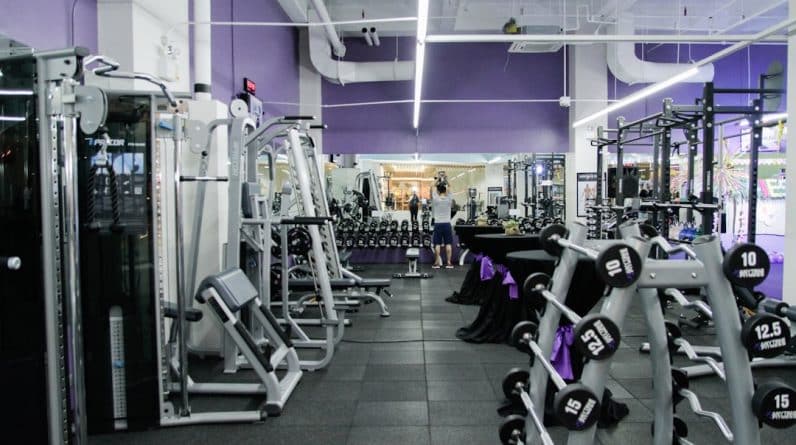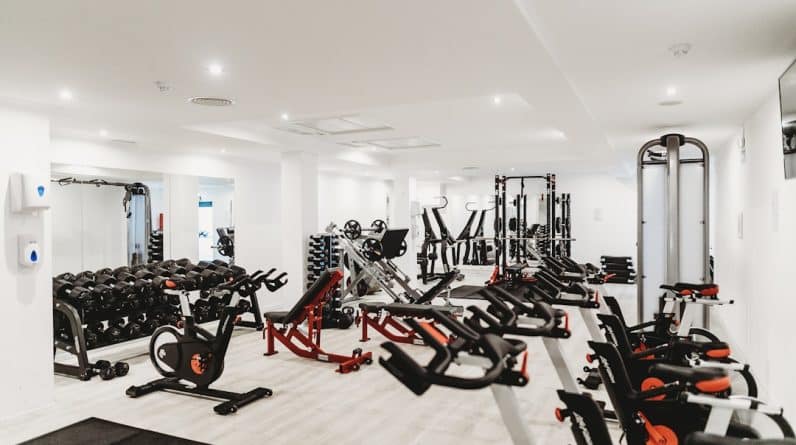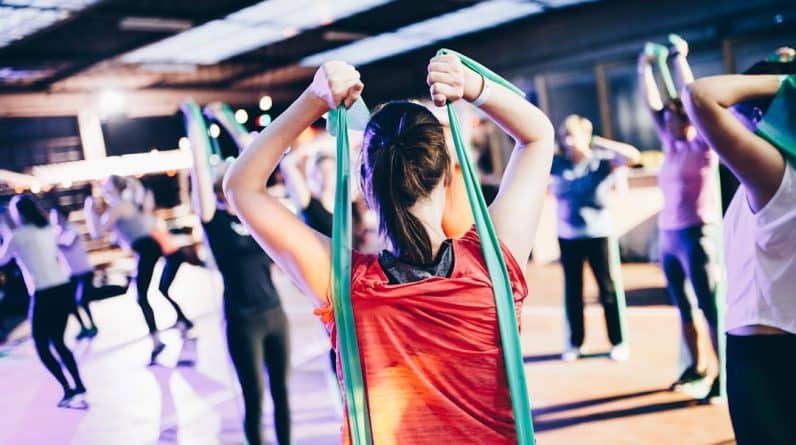
In recent years, the surge in health and fitness apps has transformed the way you approach your wellness journey. With the proliferation of smartphones and wearable technology, these applications have become an integral part of daily life for millions. You may have noticed that more people are turning to their devices for guidance on everything from workout routines to meal planning.
This trend is not merely a passing fad; it reflects a broader societal shift towards prioritizing health and well-being. As you navigate your own fitness goals, you might find that these apps offer a convenient and accessible way to stay motivated and informed. The appeal of health and fitness apps lies in their ability to provide personalized experiences tailored to your unique needs.
Whether you are a seasoned athlete or just starting your fitness journey, there is likely an app designed specifically for you. These applications often feature customizable workout plans, nutrition tracking, and progress monitoring, allowing you to take control of your health in a way that suits your lifestyle. As you explore the various options available, you may discover that these tools not only enhance your physical fitness but also contribute to your overall mental well-being by fostering a sense of community and accountability.
Key Takeaways
- Health and fitness apps are becoming increasingly popular as people prioritize their well-being and seek convenient ways to track and improve their health.
- The most popular health and fitness apps include MyFitnessPal, Fitbit, and Nike Training Club, offering a range of features from calorie tracking to personalized workout plans.
- Health and fitness apps have a significant impact on user behavior, motivating individuals to exercise more, eat healthier, and stay accountable to their fitness goals.
- There is a diverse range of health and fitness apps available, catering to different needs such as meditation, nutrition tracking, and workout routines.
- Health and fitness apps play a crucial role in personalized health management, allowing users to track their progress, set goals, and receive tailored recommendations for a healthier lifestyle.
The Most Popular Health and Fitness Apps
As you delve into the world of health and fitness apps, you’ll encounter a plethora of options, each with its own unique features and benefits. Among the most popular are MyFitnessPal, Fitbit, and Strava. MyFitnessPal stands out for its extensive food database, making it easy for you to track your caloric intake and nutritional habits.
With its user-friendly interface, you can log meals quickly and gain insights into your eating patterns, helping you make informed choices about your diet. Fitbit, on the other hand, is synonymous with wearable technology. If you own a Fitbit device, the accompanying app allows you to monitor your physical activity, sleep patterns, and heart rate.
This integration of hardware and software provides a comprehensive view of your health metrics, empowering you to set achievable goals and track your progress over time. Strava caters to those who enjoy running or cycling, offering a social platform where you can share your workouts with friends and join challenges. This sense of community can be incredibly motivating as you strive to improve your performance.
The Impact of Health and Fitness Apps on User Behavior

The influence of health and fitness apps on user behavior is profound. As you engage with these applications, you may find that they encourage healthier habits and foster a greater sense of accountability. For instance, many apps incorporate gamification elements, such as rewards for completing workouts or reaching milestones.
This can create a sense of achievement that motivates you to stay consistent with your fitness routine. You might notice that tracking your progress not only helps you stay on course but also instills a sense of pride in your accomplishments. Moreover, the social features embedded in many health and fitness apps can significantly impact your behavior.
By connecting with friends or joining online communities, you may feel more inclined to share your goals and achievements. This social interaction can lead to increased motivation as you cheer each other on and celebrate successes together. The ability to compare your progress with others can also serve as a powerful motivator, pushing you to strive for improvement while fostering a supportive environment.
The Diversity of Health and Fitness Apps Available
The diversity of health and fitness apps available today is staggering, catering to a wide range of interests and preferences. Whether you’re looking for yoga classes, strength training workouts, or meditation guides, there is an app designed to meet your specific needs. For example, if you’re interested in mindfulness and relaxation, apps like Headspace or Calm offer guided meditations that can help reduce stress and improve mental clarity.
On the other hand, if you’re focused on building muscle or losing weight, apps like StrongLifts or Lose It! provide structured workout plans and meal tracking features. This variety allows you to experiment with different approaches to health and fitness until you find what resonates with you.
You might discover that trying out various apps helps you identify your preferences and refine your goals. Additionally, many apps offer free trials or basic versions, enabling you to explore their features without committing financially. This accessibility encourages you to take charge of your health journey in a way that feels right for you.
The Role of Health and Fitness Apps in Personalized Health Management
One of the most significant advantages of health and fitness apps is their ability to facilitate personalized health management. As you engage with these tools, they often collect data about your habits, preferences, and progress. This information can be used to create tailored recommendations that align with your specific goals.
For instance, if you’re aiming to lose weight, an app may suggest meal plans based on your dietary preferences while considering any restrictions or allergies you may have. Furthermore, many health and fitness apps integrate with wearable devices, allowing for real-time monitoring of your physical activity and vital signs. This data-driven approach enables you to make informed decisions about your health in a way that was previously unattainable for many individuals.
You might find that having access to this information empowers you to adjust your routines based on what works best for your body, ultimately leading to more sustainable lifestyle changes.
The Future of Health and Fitness Apps

As technology continues to evolve, the future of health and fitness apps looks promising. You can expect advancements in artificial intelligence (AI) and machine learning to play a significant role in enhancing user experiences. These technologies will enable apps to analyze user data more effectively, providing even more personalized recommendations based on individual behaviors and preferences.
Imagine an app that not only tracks your workouts but also predicts when you’re likely to need motivation or suggests adjustments based on your progress. Additionally, the integration of virtual reality (VR) and augmented reality (AR) into health and fitness apps could revolutionize the way you engage with workouts. Picture yourself participating in an immersive yoga class set on a serene beach or running through a virtual landscape alongside friends from around the world.
These innovations could make exercising more enjoyable while also providing unique opportunities for social interaction.
The Challenges and Limitations of Health and Fitness Apps
Despite their many benefits, health and fitness apps are not without challenges and limitations. One significant concern is the accuracy of the data they provide. While many apps strive for precision in tracking metrics like calories burned or distance traveled, discrepancies can arise due to variations in user input or device calibration.
As you rely on these tools for guidance, it’s essential to remain aware that they may not always provide a complete picture of your health. Another challenge is the potential for information overload. With so many features available within these apps, it can be overwhelming to navigate through them all effectively.
You might find yourself spending more time analyzing data than actually engaging in physical activity or meal preparation. It’s crucial to strike a balance between utilizing the app’s features for motivation while ensuring that it doesn’t detract from the enjoyment of your wellness journey.
Tips for Choosing the Right Health and Fitness App
When it comes to selecting the right health and fitness app for your needs, there are several factors to consider. First and foremost, think about your specific goals—whether it’s weight loss, muscle gain, improved flexibility, or overall wellness—and look for an app that aligns with those objectives. You may want to read reviews or seek recommendations from friends who have had positive experiences with particular applications.
Additionally, consider the app’s user interface and ease of use. A well-designed app should be intuitive and straightforward so that you can focus on achieving your goals rather than struggling with navigation. Many apps offer free trials or basic versions; take advantage of these opportunities to test out different options before committing financially.
Lastly, don’t underestimate the importance of community features within an app. If social interaction motivates you, look for platforms that allow you to connect with others who share similar goals or interests. Engaging with a supportive community can enhance your experience and keep you accountable as you work towards achieving your health and fitness aspirations.
In conclusion, the growing trend of health and fitness apps has revolutionized how individuals approach their wellness journeys. With a diverse array of options available, these applications empower users like yourself to take control of their health through personalized management tools and community support. As technology continues to advance, the future holds exciting possibilities for enhancing user experiences even further.
By carefully selecting the right app for your needs and remaining mindful of its limitations, you can harness the power of technology to achieve your health goals effectively.
If you are interested in learning more about exercise techniques and tips, you may want to check out this article Exercise Techniques and Tips. This article provides valuable information on how to improve your workout routine and get the most out of your fitness journey. It offers insights on proper form, effective exercises, and helpful tips for staying motivated. By incorporating these techniques into your routine, you can enhance your overall health and fitness levels.
FAQs
What is the current number of health and fitness apps available?
As of 2021, there are over 100,000 health and fitness apps available for download on various app stores.
How many health and fitness apps are downloaded each year?
In 2020, health and fitness apps were downloaded over 656 million times worldwide.
What are the most popular types of health and fitness apps?
The most popular types of health and fitness apps include workout and exercise apps, nutrition and diet apps, meditation and mental wellness apps, and sleep tracking apps.
How many health and fitness apps are free to download?
A majority of health and fitness apps are free to download, with many offering in-app purchases or premium subscription options for additional features and content.
Are health and fitness apps regulated for accuracy and safety?
Health and fitness apps are not regulated by a central authority for accuracy and safety. Users are encouraged to research and review app ratings, user feedback, and consult with healthcare professionals before using health and fitness apps for medical or wellness purposes.





